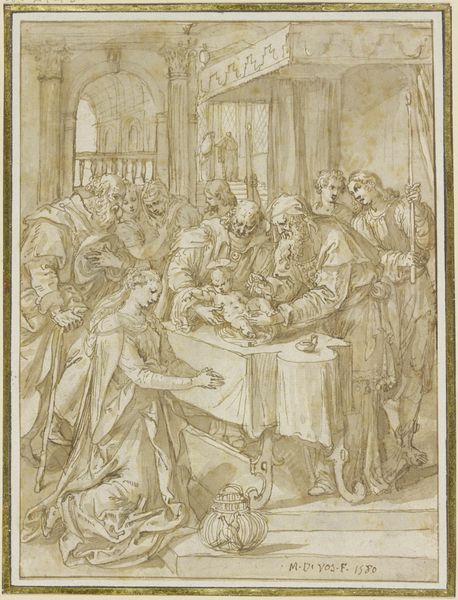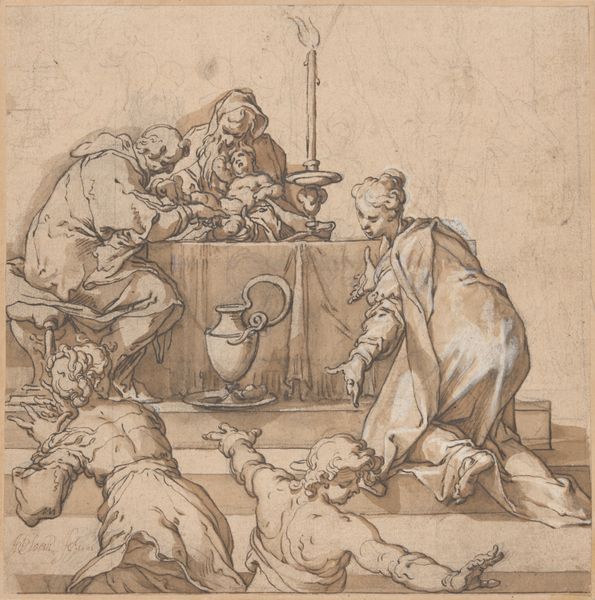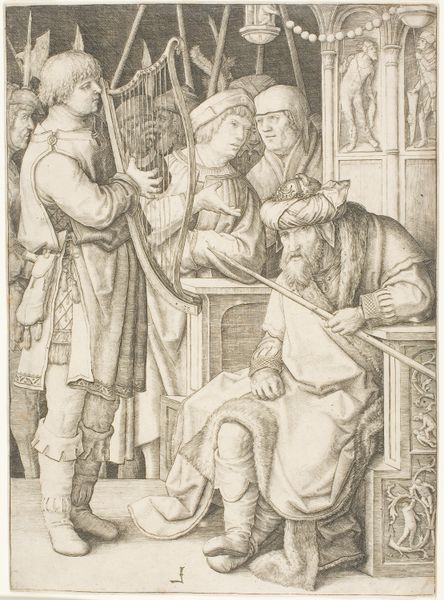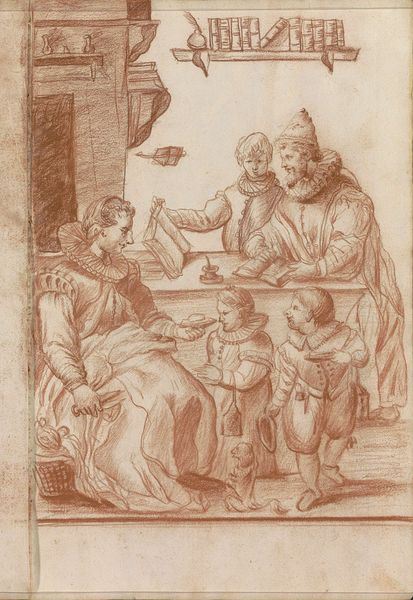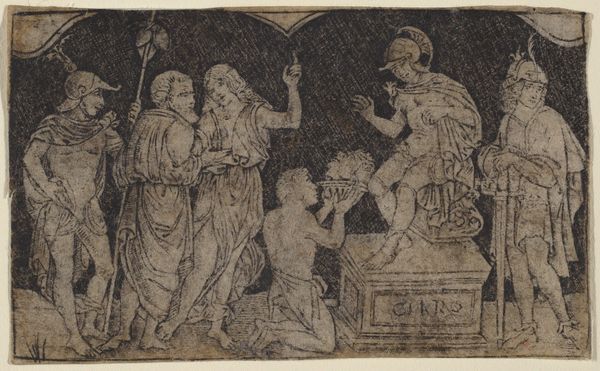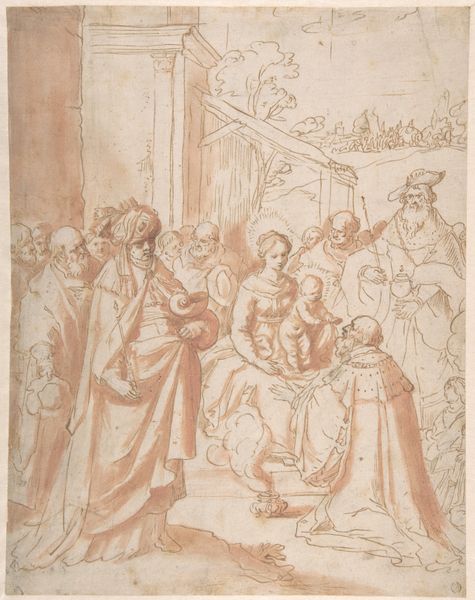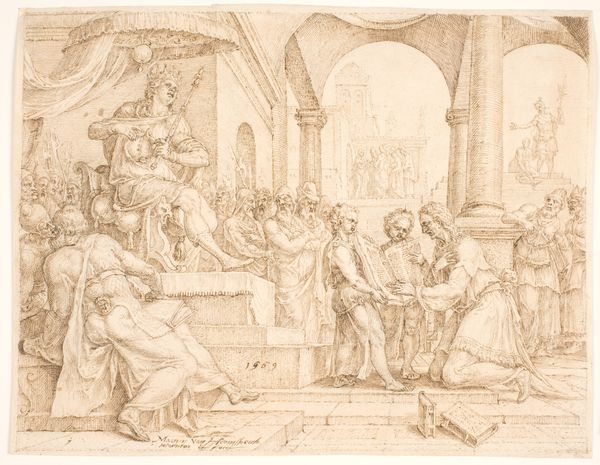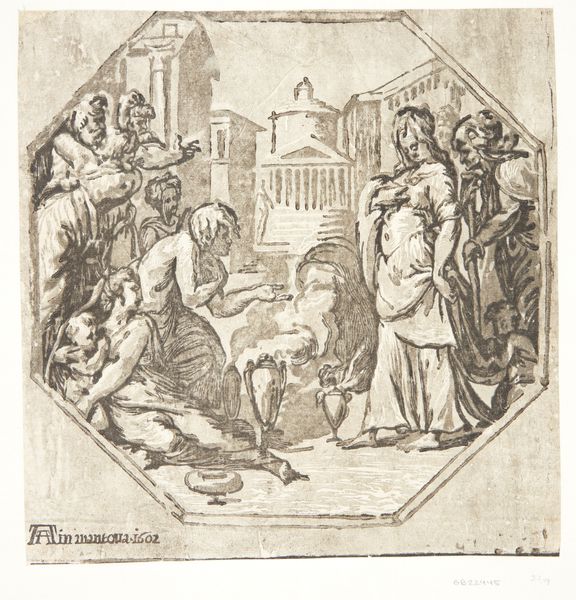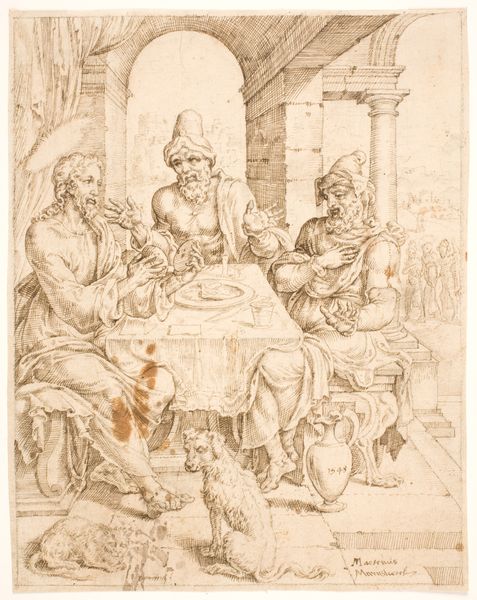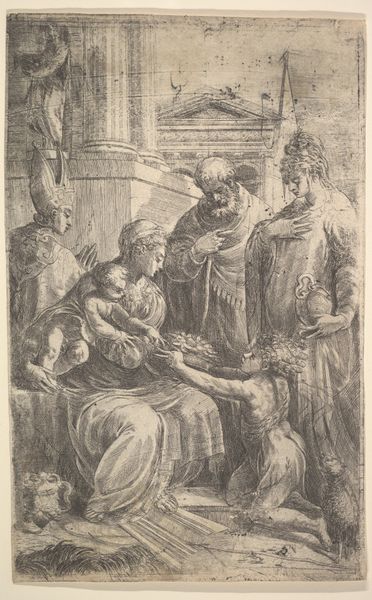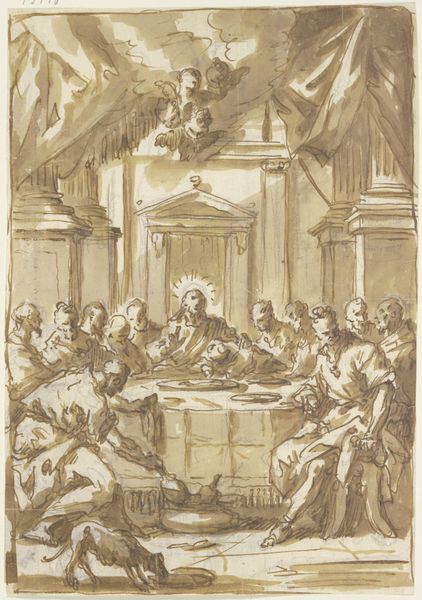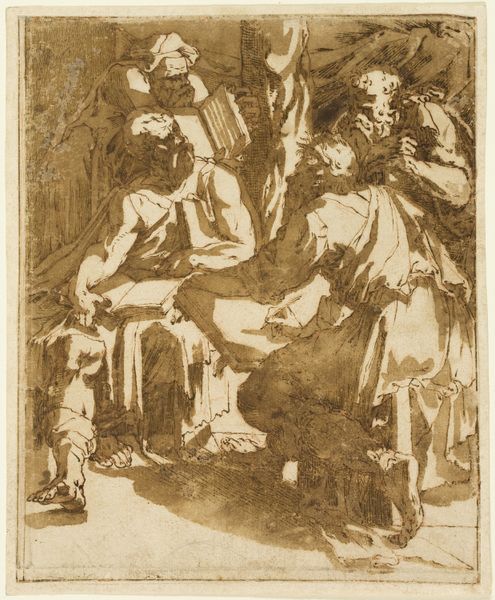
Judith fremviser Holofernes' afhuggede hoved for folket 1620
0:00
0:00
drawing, ink, pen, charcoal
#
drawing
#
narrative-art
#
ink painting
#
charcoal drawing
#
figuration
#
oil painting
#
ink
#
pen
#
watercolour illustration
#
charcoal
#
history-painting
#
italian-renaissance
#
watercolor
Dimensions: 148 mm (height) x 142 mm (width) (bladmaal)
Curator: Augustin Braun's drawing, “Judith Showing the Head of Holofernes to the People,” created around 1620. It’s done in ink, charcoal, and pen on paper. Editor: The immediate impression is of both triumph and gruesomeness. The drawing's reddish-brown hues add a sort of antique drama. What context surrounds this particular depiction? Curator: It's an important visualization of the Book of Judith. The narrative revolves around Judith, a Jewish widow who saves her city, Bethulia, from the Assyrian army by infiltrating their camp and beheading their general, Holofernes. Braun has staged it in a public display. Editor: Staged indeed, look at the theatrics: the torch lighting Judith, her assistant holding Holofernes’ head almost like a trophy, and the expressions of horror and awe below. How much does this speak to the gendered politics of the time? Judith, as a woman, is celebrated as a hero precisely because her actions defy patriarchal expectations. Curator: Exactly! Her strength becomes a tool for liberation, but within that we need to remember how easily these sorts of heroic portrayals get appropriated to reinforce other structures of power, whether royal or religious. Consider its likely reception in the 17th century – Judith was often used as a symbol of just resistance against tyranny. Editor: You're right, this drawing, with its distribution via prints, could have had implications for resistance movements. Who controls the narrative? That interplay seems essential here. Braun is carefully positioning how this act is publicly remembered and used. Curator: The question is also relevant today when considering the broader themes of violence, resistance, and gendered representations in art history. I also see in it an almost unsettling foreshadowing of similar displays of power used later in religious and political conflicts. Editor: A powerful point to consider, about representation of such acts being a precedent for future narratives about them. Thank you. Curator: Thank you. Looking closely reveals more layers of this image.
Comments
No comments
Be the first to comment and join the conversation on the ultimate creative platform.
